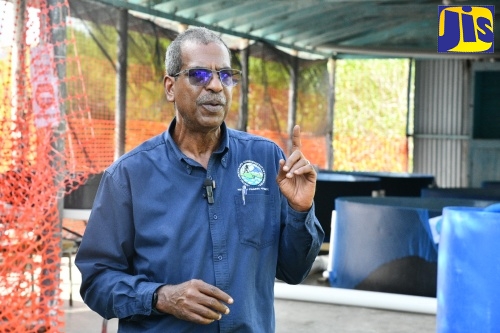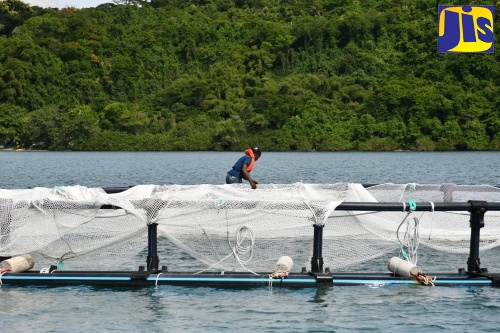Agriculture Ministry Launches Red Snapper Pilot to Strengthen Food Security and Blue Economy
By: , October 14, 2025The Full Story
The Ministry of Agriculture, Fisheries and Mining is advancing Jamaica’s food security and pioneering a new frontier in blue economy sustainability through a Red Snapper Cage Culture Fin Fish Pilot Project.
The project is spearheaded by the United Nations Food and Agriculture Organization (FAO), in partnership with the National Fisheries Authority (NFA).
The initiative forms part of a regional Shrimp and Red Snapper Pilot Grow-Out under the Caribbean Community (CARICOM), implemented in Jamaica, St. Lucia, and St. Kitts and Nevis by the FAO at a cost of approximately $63 million.
Locally, the Red Snapper Pilot Project is being undertaken at the NFA’s Bowden Bay Mariculture Research Facility in St. Thomas.
NFA Chief Executive Officer (CEO), Dr. Gavin Bellamy, said the initiative aligns with the Agriculture Ministry’s ‘FACE of Food’ programme, which focuses on food security, agribusiness development, climate-smart technologies, and export expansion.

“It aligns with the overall vision for the fishery sector. First of all, Jamaica is moving and wants to achieve food independence—that is the main thing. Fish is a very healthy protein. So, we are trying our best to increase our marine stock… our tilapia, our captured fisheries, all our fish stock to have it accessible to the nation at a reasonable price,” he told JIS News.
Dr. Bellamy was speaking during a tour of the research facility on Monday (October 13) to showcase the development progress of the pilot project.
The CEO also underscored the initiative’s environmental benefits, noting its potential to support the recovery of reef fisheries and to create ecological space for the return of other marine species.
The FAO’s June 2025 global assessment of marine fish stocks revealed that 64.5 per cent of fisheries are within sustainable limits, while 35.5 per cent are now overfished – underscoring the urgency and relevance of initiatives such as the Red Snapper Cage Culture Pilot Project

“This helps us to reduce the stress initially on our reef fisheries, allowing our reef fisheries to rejuvenate, to increase sustainability for reintroduction of certain species. If we do this correctly, we can do import substitution and go into export,” Dr. Bellamy noted.
He disclosed that Jamaica currently imports approximately 80 per cent of the fishery products consumed nationally, adding that the country ranks among the highest consumers globally.
Meanwhile, Assistant FAO Representative for Jamaica, The Bahamas and Belize, Roslyn Jackson-Richards, highlighted the importance of collaboration for the project’s long-term success.
“Public-Private Partnership is very important in this initiative whereby we are seeking to scale up the finfish and crustacean in the Caribbean, which is a broader initiative geared towards improved livelihoods and ensuring that we have a sustainable blue economy,” she said.
Mrs. Jackson-Richards reaffirmed the FAO’s commitment to ongoing collaboration with the Ministry, emphasising the organisation’s support for exploring the initiative’s future expansion.
“This project is beyond production. It is anticipated that the initiative will improve the livelihoods of coastal communities and expand the aquaculture sector in Jamaica,” the FAO Representative said.
Dr. Bellamy reported that the Red Snapper Cage Culture Pilot Project is over 70 per cent complete.
The upcoming phase will involve transferring fingerlings into anchored sea cages, where they will undergo the grow-out cycle under close monitoring of growth rates, survival outcomes, and environmental performance indicators.
Dr. Bellamy added that documentation of the pilot project’s processes, associated costs, and emerging best practices is ongoing, and this information will be shared with CARICOM partners upon the initiative’s conclusion in 2026.




